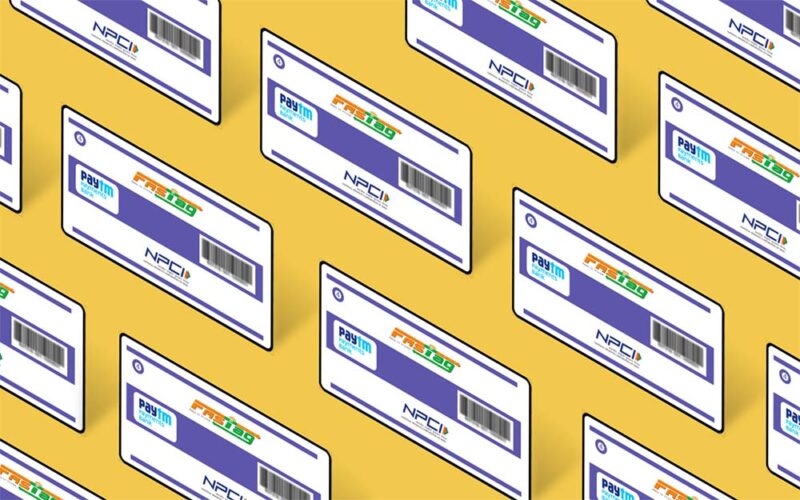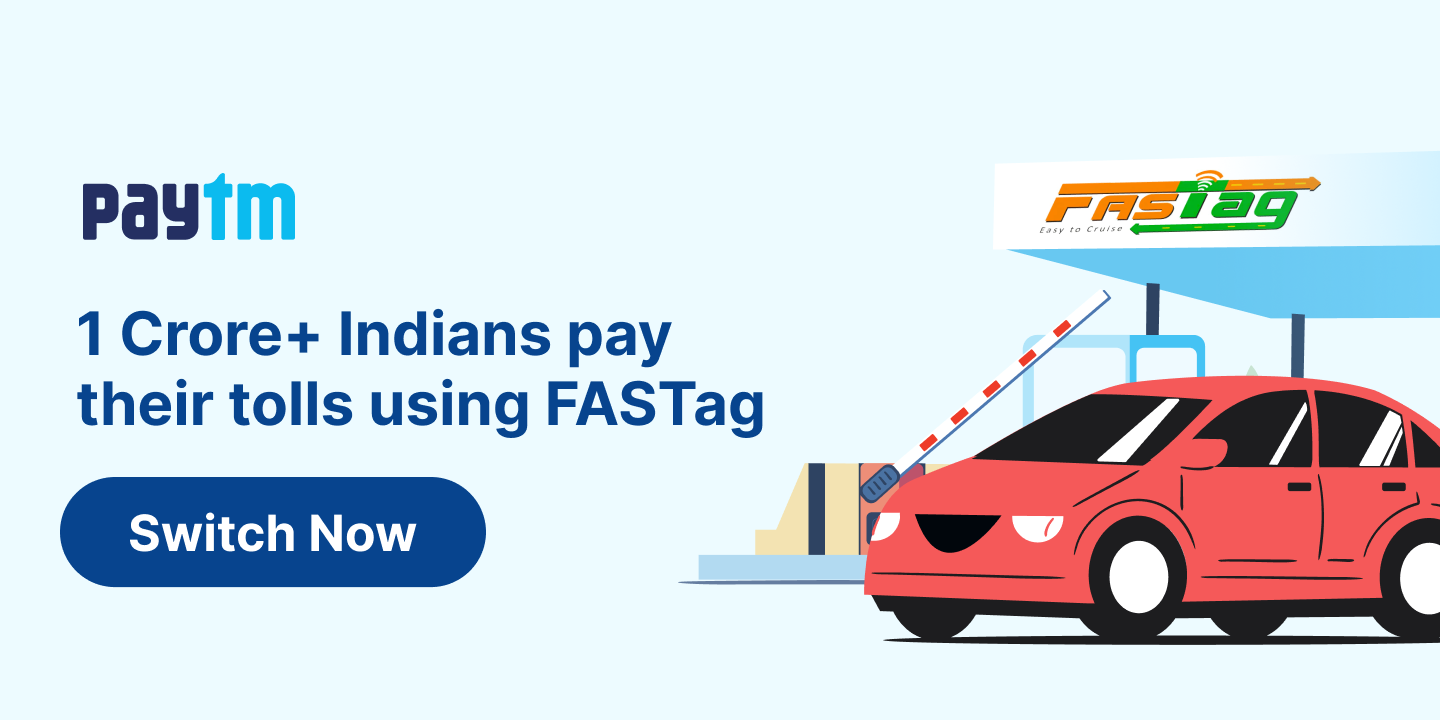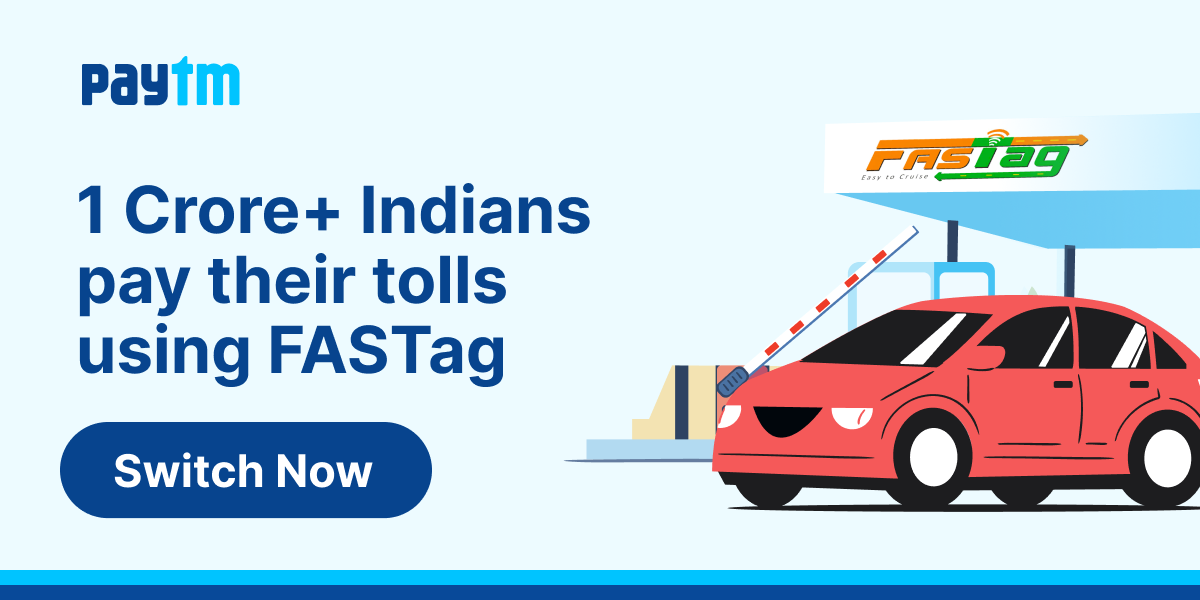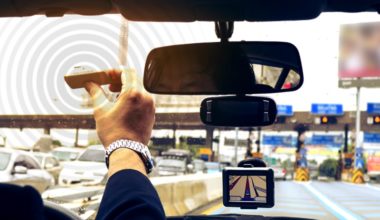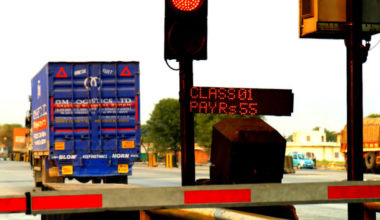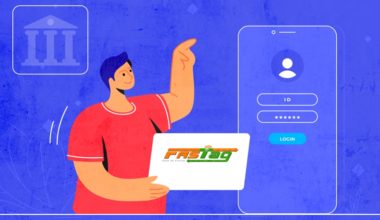The National Payments Corporation of India (NPCI) has come up with the National Electronic Toll Collection (NETC) program to simplify the electronic toll payment process. This initiative provides a unified solution for toll payments through FASTag.
Table of Contents Show
FASTag is an electronic toll-collection system that is functional through tags fitted on vehicles. NPCI FASTag is widely praised for the seamless payment interface it offers. It has many aspects that people are unaware of, such as what is NPCI FASTag and how it works, which we are going to discuss in this blog.
What is NPCI FASTag?
NPCI FASTag is a Radio Frequency Identification Tag (RFID) designed for convenient toll payments directly from the associated customer’s linked savings/current or prepaid account. The FASTag is placed on the vehicle’s windshield, allowing customers to pass through toll plazas without stopping for payment. The toll fee is automatically deducted from the customer’s linked account.
FASTag is vehicle-specific and cannot be transferred to another vehicle. To use the FASTag, users need to link their FASTag to their prepaid account. You may have to recharge or top up this facility regularly to pass through toll plazas easily. At all times, you have to maintain a sufficient balance to prevent yourself from getting blacklisted.
How Does NPCI FASTag Work?
NPCI (National Payments Corporation of India) FASTag is an electronic toll collection system used to facilitate cashless payments at toll plazas on national highways. It is an initiative by the Indian government to reduce traffic congestion, save time, and promote digital payments. Here’s how NPCI FASTag works:
Step 1- Registration: To get a FASTag, the vehicle owner must approach a certified bank or financial institution authorized to issue FASTags. The vehicle owner provides the required documents, including vehicle registration details, KYC documents, and a passport-sized photograph. After verification, the bank issues a FASTag.
Step 2- Activation: Once issued, the FASTag needs to be activated. This can usually be done through a mobile app or the issuer’s website. Vehicle owners need to link their FASTag to a prepaid or savings account for automatic top-up when the balance runs low.
Step 3- Affixing the FASTag: The FASTag comes with an adhesive sticker, which the vehicle owner affixes to the vehicle’s windshield, just behind the rear-view mirror. This position ensures that the FASTag can be easily scanned at toll plazas.
Step 4- Usage at Toll Plazas: When a vehicle with an active FASTag approaches a toll plaza, he has to pass through the dedicated FASTag lanes that lanes are equipped with RFID (Radio-Frequency Identification) technology.
Step 5- RFID Scanning: As the vehicle approaches the toll booth, the RFID reader scans the FASTag on the windshield. The reader communicates with the FASTag’s microchip to deduct the mount isappropriate toll amount from the linked prepaid or savings account.
Step 6- Toll Payment Confirmation: Once the toll a deducted, a green light and a beep signal indicate successful payment. The vehicle can then proceed without stopping.
Step 7- Transaction Notifications: Vehicle owners receive SMS and email notifications for each FASTag transaction, which includes details of the toll amount deducted.
Step 8- Recharge: Vehicle owners need to maintain a sufficient balance in their linked prepaid or savings account to ensure uninterrupted use of FASTag. When the balance runs low, they can recharge the FASTag account through the bank’s mobile app, website, or designated recharge centres.
Step 9- Checking Account Balance: Vehicle owners can also check their FASTag account balance, transaction history, and other details through the bank’s app or website.
Objectives of NPCI FASTag
NPCI FASTag was designed to solve the toll payment needs of the drivers. Along with offering convenient toll payment, FASTag serves the objectives given below:
- Cashless Transactions: Encourage and facilitate cashless transactions at toll plazas, reducing the need for physical currency and the associated risks of handling cash.
- Traffic Congestion Reduction: Minimize traffic congestion at toll booths by enabling faster and smoother toll collection, as vehicles with FASTags can pass through without stopping.
- Time Savings: Save time for commuters by eliminating the wait times at toll plazas, leading to faster journeys and reduced travel times.
- Environmental Benefits: Promote eco-friendly practices by reducing fuel consumption and vehicle emissions that occur because of stopping at toll booths.
- Digital India Initiative: Align with the Indian government’s Digital India campaign by encouraging electronic payments and enhancing financial inclusion.
- Data Analytics: Enable the collection of data on vehicle movement and toll transactions, which can be used for traffic management, future infrastructure planning, and policy decision-making.
- Interoperability: Ensure that FASTags issued by different banks and agencies are interoperable, allowing vehicles to use any FASTag lane regardless of the issuing institution.
How Beneficial is NPCI FASTag?
The initiative of NPCI FASTag provides collective benefits to all the major parties involved in the toll transaction: Road users, toll operators, and the Government. Here is how FASTag benefits them all:
- Benefits For Road Users
- Seamlessly pass through toll plazas with minimal stops.
- Convenient cashless payment of toll fees.
- Reduced traffic congestion and shorter travel durations.
- Access to toll statements via mail or online platforms.
- Benefits For Toll Operators
- Decreased operating expenses.
- Enhanced audit control through centralized user accounts.
- Improved capacity utilization without any additional infrastructure.
- Benefits For the Government
- Economic fuel savings and diminished emissions due to less idle time and frequent toll plaza stops.
- Better transparency in toll transactions.
Renowned Banks Providing FASTag Services
NPIC FASTag can be easily purchased from any National Electronic Toll Collection (NETC) member bank. As of now, almost 26 banks are certified by Indian Highway Management Company Limited (IHMCL) to issue FASTag, while 12 of them are certified to execute the acquiring services at toll plazas. A list of these banks is given below.
| NETC Member Banks | Issuer | Acquirer |
|---|---|---|
| Canara Bank | Yes | No |
| Indian Bank | Yes | No |
| Punjab National Bank | Yes | Yes |
| State Bank of India | Yes | Yes |
FASTag, introduced by NPCI, is an electronic toll-collection system in India that simplifies toll payments through tags affixed to vehicle windshields. The primary goal of FASTag is to ensure quick and hassle-free toll payment, benefiting all parties involved in the transaction. The advantages and features of NPCI FASTag mentioned above highlight the mutual benefits for everyone.
Disclaimer: This blog is written to make it easy for readers to understand complicated processes. Some information and screenshots may be outdated as government processes can change at times without notification. However, we try our best to keep our blogs updated and relevant.
